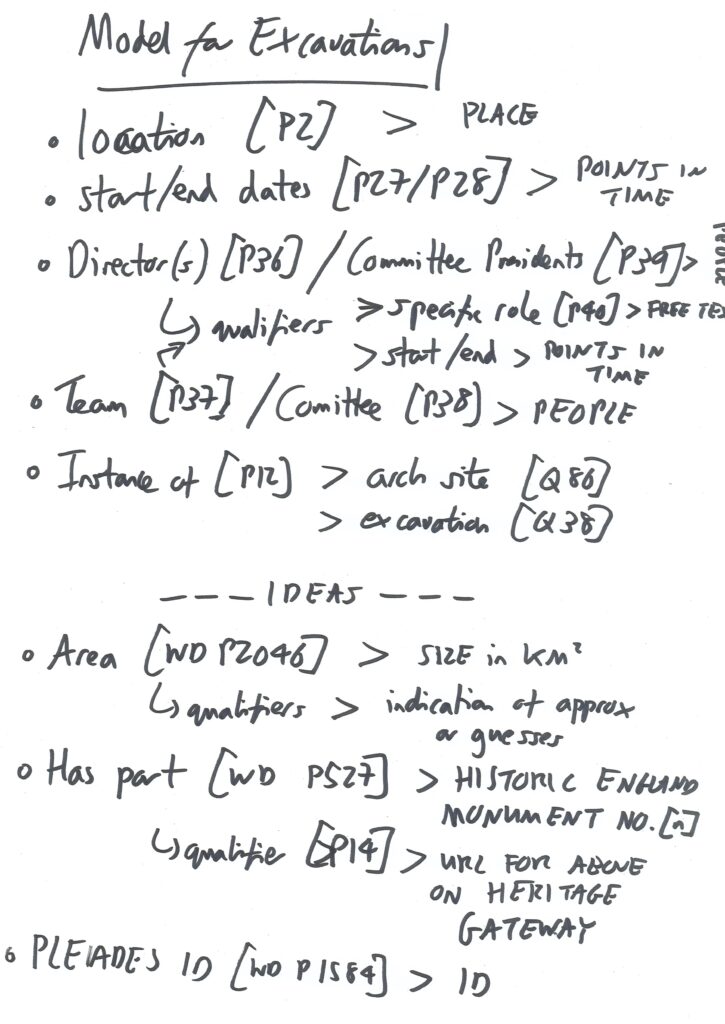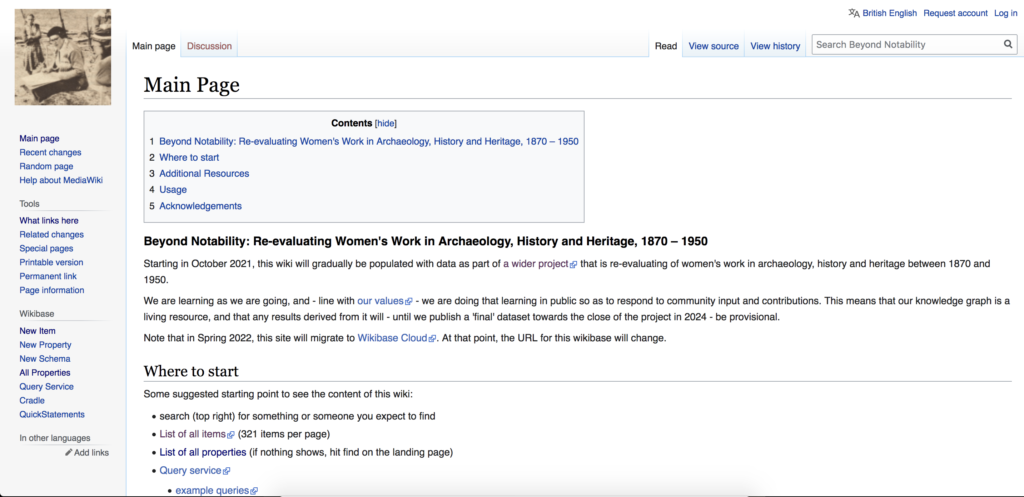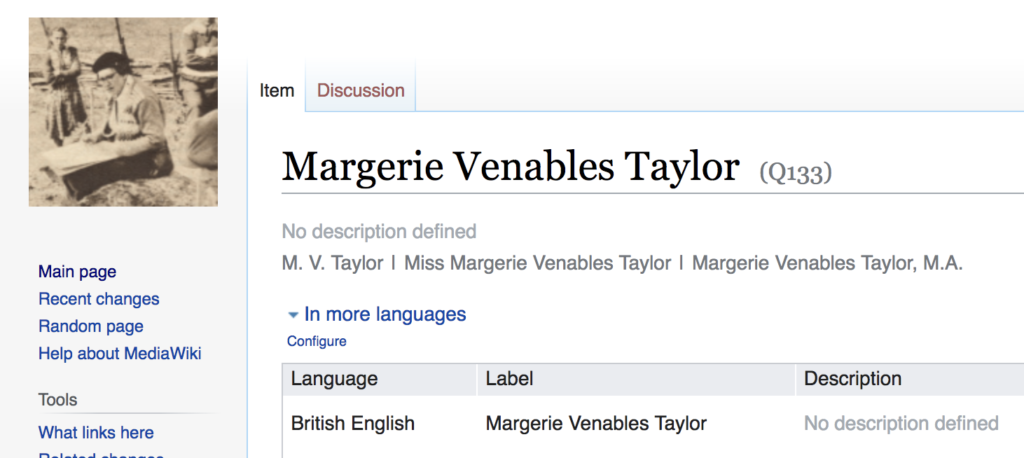By Amara Thornton (Co-Investigator)
A fair few women in our database were involved in excavation. Their work spans a spectrum between informal digging, directed by one person who may or may not be ‘trained’, to a larger scale affair organised by multiple groups such as local excavation committees, learned societies, training institutions, and/or universities; including both paid and volunteer labour; and supported financially by public subscription, patronage, grants, or a combination of the lot. In order to indicate effectively both the potential complexity of archaeological sites in terms of staffing, and to provide ways to document the full range of ‘work’ on site, we have come up with a model for representing excavations as organisations.

We have two main properties that (at the moment) serve as the gateway to our excavation model: [member of excavation during archaeological field work] and [director of archaeological fieldwork]. The first excavation we modelled using these properties was the dig that took place over multiple seasons in the 1930s in Colchester. We used the excavation report Camulodonum: First Report on the Excavations at Colchester 1930-39 (an item on our database) as our main source.
The Introduction to Camulodonum provides the staff list for our model. In it, authors Mark Reginald Hull and Christopher Hawkes acknowledge by name a myriad of paid and unpaid men and women who worked on site. We created an item [Excavations at Colchester] and used the Introduction to provide a skeleton staff list and organisational framework for the excavation (Please note: the staff was absolutely larger than the number explicitly named in Hull and Hawkes’s Introduction).
The Introduction names 4 Directors (all men), 21 “voluntary assistants” (11 women and 10 men), and 4 “charge hands” (all men). The men listed as “charge hands” were most likely managing a other men (not named and credited for their labour in the final report) who were undertaking the heavy digging. The “charge hands” and the men who they managed were probably all paid for their work, though only access to the paylists from the excavation will tell us how much.
The Colchester dig was organised by the Colchester Excavation Committee and the Society of Antiquaries Research Committee – we have used a property [organised by] to link to entries for each group. The President of the Colchester Excavation Committee was Annie Pearson, Viscountess Cowdray. She served alongside various Colchester notables, and representatives from the Society of Antiquaries. The Society of Antiquaries Research Committee also provided funding out of their designated pot for the Colchester dig.
The excavation model that we have used for Colchester is expandable. If, for example, we find the names of other people working (either as paid or unpaid labour) on site, we can add them using the property [member of the excavation team]. We can adjust job titles for any of the individuals listed, should we find more specific information elsewhere. We can add specifics about where people were working within the area being excavated, which could be useful if particular areas of the excavation are now designated archaeological sites with individual entries on Wikidata. If a particular named individual is associated with the discovery of an artefact in a museum collection, and the artefact is discoverable through a museum collection database, we could add a link to the artefact to their entry.
The model works for smaller-scale excavations as well. In 1904, the artist Jessie Mothersole, who is on our database, worked as a “lady artist” copying tomb paintings at Saqqara, Egypt, an ancient Egyptian necropolis and (both then and now) an archaeological site and tourist attraction. We created [Excavations at Saqqara 1] (because there were multiple seasons with slightly different staff) as an item and linked it to her entry. The director of this season at Saqqara was Margaret Murray, whose report on the dig provides details on some staff. But one of the most valuable sources for outlining the staffing of this excavation is a short article written by Jessie Mothersole for the popular illustrated magazine Sunday at Home.
In this article, Mothersole outlines that eleven Egyptian men and boys were clearing the tombs (digging out sand) to lay bare the tomb paintings so that they could be copied: “eight basket boys, two turyehs, and a reis”. She does not name any of these men and boys. In order to include them with what little information she provided, we created an item for [name unrecorded] which we could use to indicate the existence of each person, and give them a job title.
There were two Egyptian men that both Mothersole and Murray named in their writings on this season of work at Saqqara: Reis Khalifa and Reis Rubi, two experienced foremen who were based at Saqqara during the time. They were father and son. Both are also mentioned in the Service des Antiquities journal. Mothersole also names the servant who attended the three women on site, Ibrhim Abd-el-Karim. We added him and his job title to the members of the dig team.
We hope that this model for excavations helps to emphasise the critical factor on any dig: people. We may not know who they are, or even what exactly they were doing, but if we view any excavation as an organisation we can begin to give people the credit they are due for their work to reveal the past.






